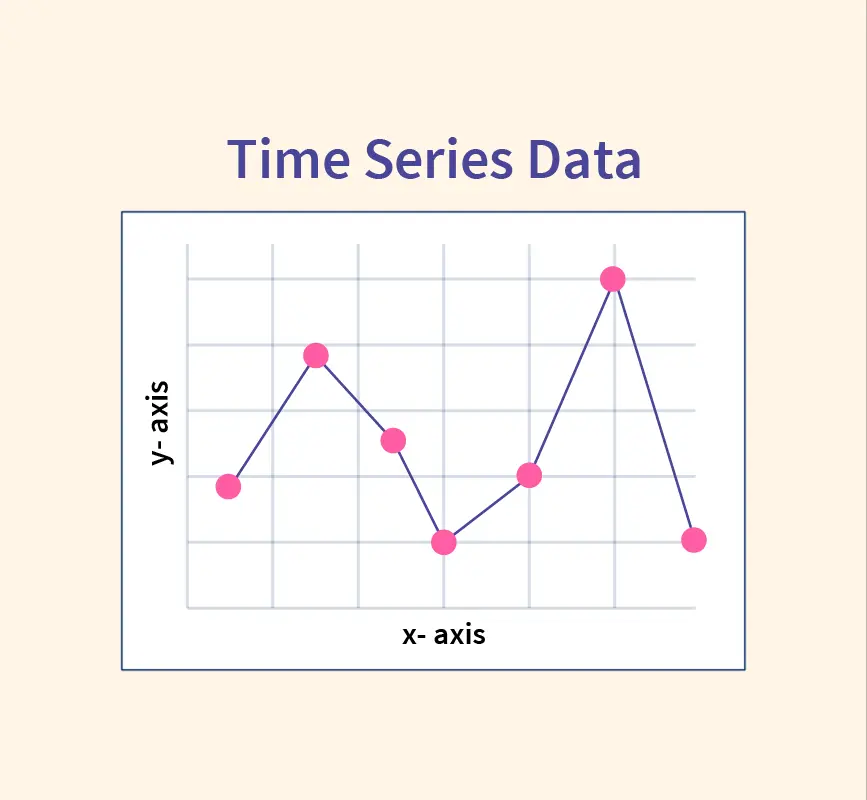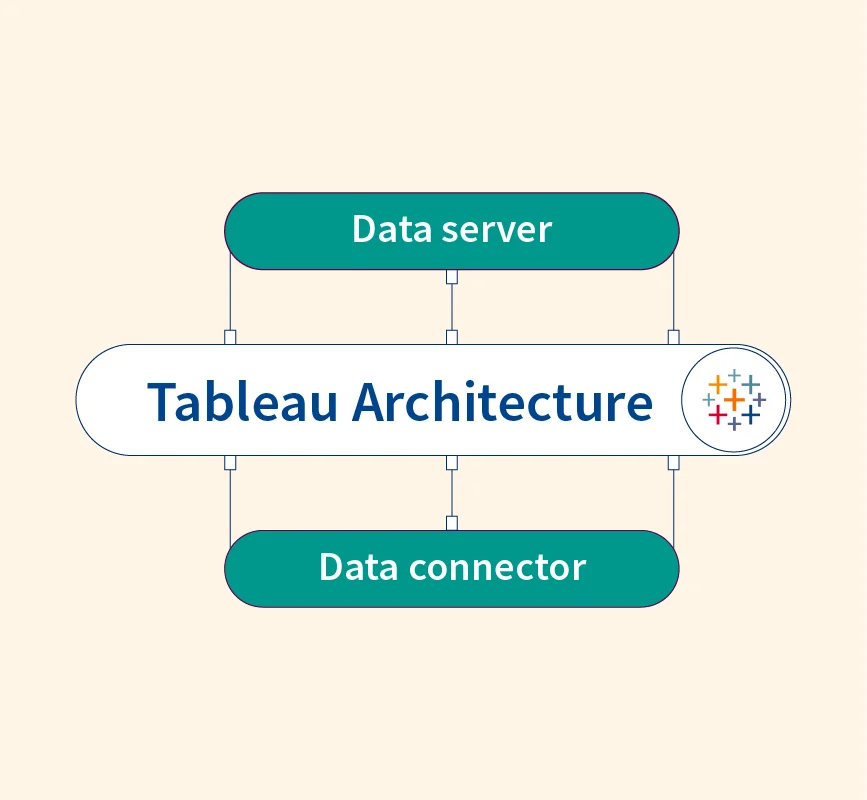Data analysis has become a critical asset across industries such as finance, healthcare, marketing, and e-commerce. In a world where data drives decision-making, extracting insights from vast datasets is essential for staying competitive. Python is widely used for data analysis because of its versatility, simplicity, and rich ecosystem of libraries specifically designed to handle data tasks. Python’s extensive libraries and tools allow analysts and data scientists to efficiently clean, analyze, and visualize data. This article explores the comprehensive use of Python for data analysis, providing an overview of essential libraries, techniques, and real-world applications.
Overview of Data Analysis in Python
Data analysis involves collecting, processing, and interpreting data to uncover insights and support decision-making. In a data-driven landscape, analyzing data effectively can reveal trends, patterns, and correlations that drive strategic actions. Python, with its robust ecosystem of libraries, has become a preferred choice for data analysis due to its simplicity and versatility.
Several key libraries power Python’s capabilities for data analysis:
- NumPy: Provides support for large, multi-dimensional arrays and matrices and a vast collection of mathematical functions.
- Pandas: Essential for data manipulation and data wrangling, offering data structures like DataFrames that simplify data handling.
- Matplotlib: A fundamental plotting library that allows users to create a wide variety of static, animated, and interactive visualizations.
- Seaborn: Built on top of Matplotlib, it provides a high-level interface for drawing attractive and informative statistical graphics.
- SciPy: Adds significant capabilities in scientific computing, with tools for optimization, integration, and statistics.
These libraries collectively offer Python users a comprehensive toolkit for everything from data loading and cleaning to complex analyses and visualization. Their functionality streamlines the data analysis process, making Python an invaluable asset for analysts and data scientists across various domains.
Setting Up the Environment
To begin data analysis in Python, it’s essential to set up the right environment with necessary tools and libraries. Start by installing Python (if not already installed), and then use pip (Python’s package manager) to install essential libraries like NumPy, Pandas, Matplotlib, Seaborn, and SciPy. For instance, run the command:
pip install numpy pandas matplotlib seaborn scipyFor a streamlined workflow, set up a Jupyter Notebook, a popular IDE that supports interactive coding and easy visualization. Jupyter allows users to write and execute Python code in a browser interface, displaying output (including visuals) directly below code cells, making it ideal for data analysis. Alternatively, IDEs like PyCharm or VS Code also support data analysis and provide advanced debugging and extension capabilities. With these tools in place, you’re ready to begin analyzing data in Python.
Analyzing Numerical Data with NumPy
NumPy is a fundamental library in Python for handling numerical data and is widely used for data analysis, especially when dealing with large datasets or performing mathematical operations. It introduces the array object, which is more efficient and flexible than traditional Python lists, making it ideal for numerical computations.
NumPy arrays allow analysts to store and manipulate data in structured forms, facilitating complex calculations. Arrays are contiguous in memory, which improves processing speed and reduces overhead, enabling faster computations, especially in tasks involving linear algebra, Fourier transforms, and random number generation.
Creating and Manipulating Arrays
In NumPy, arrays are created to store numerical data in a structured, optimized format. Arrays can be one-dimensional, two-dimensional, or multi-dimensional, and can be created using various functions such as np.array, np.zeros, and np.ones. For example:
import numpy as np
array_1d = np.array([1, 2, 3])
array_2d = np.zeros((2, 3)) # Creates a 2x3 array filled with zerosNumPy supports element-wise operations on arrays, which allows for efficient calculations. Basic operations such as addition, subtraction, multiplication, and division can be directly applied to arrays:
array_a = np.array([1, 2, 3])
array_b = np.array([4, 5, 6])
result = array_a + array_b # Output: [5, 7, 9]These operations provide optimized performance for handling large datasets in data analysis tasks.
Array Indexing and Slicing
Array indexing and slicing in NumPy allow access to specific elements or subsets of data. Indexing retrieves individual elements, while slicing extracts multiple elements based on specified ranges:
array = np.array([1, 2, 3, 4, 5])
element = array[2] # Retrieves the third element, output: 3
subset = array[1:4] # Retrieves a slice, output: [2, 3, 4]For multi-dimensional arrays, indexing and slicing can access rows, columns, or submatrices:
array_2d = np.array([[1, 2], [3, 4], [5, 6]])
row = array_2d[1] # Output: [3, 4]Indexing and slicing provide efficient means to manipulate and analyze data within arrays.
Advanced Array Operations
NumPy’s advanced features, such as broadcasting and reshaping, streamline complex array manipulations. Broadcasting allows NumPy to perform operations on arrays of different shapes without explicit looping:
array = np.array([1, 2, 3])
result = array + 10 # Output: [11, 12, 13]Reshaping changes the shape of an array without altering its data, which is useful for preparing data for machine learning models or transforming matrices for specific calculations:
array = np.array([1, 2, 3, 4, 5, 6])
reshaped = array.reshape((2, 3)) # Output: [[1, 2, 3], [4, 5, 6]]These capabilities make NumPy indispensable for data analysis, as they allow for efficient data manipulation, enabling streamlined workflows and optimized data processing in Python.
Data Analysis Using Pandas
Pandas is a powerful Python library for data manipulation and analysis. It introduces two primary data structures, Series and DataFrames, that simplify handling complex datasets and enable efficient analysis. Pandas is particularly useful for tasks such as data cleaning, transformation, aggregation, and merging. With its intuitive syntax and high-level functions, Pandas allows data scientists to explore and preprocess data effectively, making it a cornerstone of the Python data analysis ecosystem.
Creating and Manipulating Series and DataFrames
Pandas offers two primary structures for data manipulation: Series and DataFrames. A Series is a one-dimensional array-like object with labels, making it useful for handling single columns of data:
import pandas as pd
data_series = pd.Series([10, 20, 30], index=['a', 'b', 'c'])A DataFrame, on the other hand, is a two-dimensional table where each column can hold different data types, similar to a spreadsheet. DataFrames are essential for handling tabular data. You can create DataFrames from lists, dictionaries, or CSV files:
data_dict = {'Name': ['Alice', 'Bob'], 'Age': [25, 30]}
df = pd.DataFrame(data_dict)
# Load data from a CSV file
df_from_csv = pd.read_csv('data.csv')With these structures, Pandas enables quick and efficient manipulation of structured data, providing a foundation for more advanced data analysis tasks.
Data Cleaning Techniques
Data cleaning is a crucial step in data analysis, and Pandas provides tools for handling common data quality issues. For instance, missing values can be filled with appropriate values or removed:
df['Column'].fillna(value=0, inplace=True) # Filling missing values
df.dropna(inplace=True) # Removing rows with missing valuesRemoving duplicates is another essential task to ensure data accuracy. This can be done using:
df.drop_duplicates(inplace=True)Pandas also supports filtering data based on conditions, making it easy to work with specific subsets of data:
filtered_df = df[df['Age'] > 20] # Filtering rows where Age is greater than 20These data cleaning functions help transform raw data into a consistent and accurate dataset ready for analysis, making Pandas an essential tool for preparing data.
Data Aggregation and Grouping
Data aggregation involves summarizing data to extract meaningful insights. With groupby and aggregate functions, Pandas makes it easy to group data by specific columns and apply various functions like sum, mean, or count:
grouped = df.groupby('Category').sum() # Summing values by categoryThis grouping method allows you to condense data and gain insights from aggregated metrics. Additionally, custom aggregation functions can be applied to each group to create tailored summaries:
agg_result = df.groupby('Category').agg({'Column1': 'mean', 'Column2': 'sum'})Data aggregation and grouping are essential for identifying trends, comparing segments, and making data-driven decisions. Pandas’ flexibility in combining different aggregation methods simplifies the analytical process.
Merging, Concatenating, and Joining DataFrames
In data analysis, combining datasets from multiple sources is often required. Pandas provides versatile functions to merge, concatenate, and join DataFrames, making it easier to handle relational data.
The merge function combines DataFrames based on common columns, similar to SQL joins:
df_merged = pd.merge(df1, df2, on='KeyColumn', how='inner')Concatenation stacks DataFrames along a specific axis, useful for appending rows or columns:
df_concat = pd.concat([df1, df2], axis=0) # Concatenates along rowsFor more complex datasets, join operations allow merging based on the index:
df_joined = df1.join(df2, how='outer')These functions make it easier to combine data from various sources, enabling comprehensive analysis and better insights. Pandas’ flexibility in merging and joining enhances its power for data integration tasks.
Data Visualization with Matplotlib and Seaborn
Data visualization is a crucial component of data analysis, as it allows analysts to present findings visually, making complex data easier to understand and interpret. Python’s libraries Matplotlib and Seaborn offer a wide array of plotting options to create meaningful visuals that enhance data insights. Visualizations are essential for identifying trends, patterns, and anomalies in data, ultimately aiding in data-driven decision-making.
1. Basic Plots with Matplotlib
Matplotlib is a foundational library in Python for creating basic and complex plots. It provides extensive options for building line plots, bar charts, and histograms, which are often the first step in data visualization.
- Line Plot: Useful for visualizing trends over time.
import matplotlib.pyplot as plt
plt.plot([1, 2, 3, 4], [10, 20, 25, 30])
plt.xlabel('X-axis')
plt.ylabel('Y-axis')
plt.title('Line Plot Example')
plt.show()- Bar Chart: Effective for comparing categories or discrete variables.
plt.bar(['Category 1', 'Category 2'], [10, 15])
plt.xlabel('Categories')
plt.ylabel('Values')
plt.title('Bar Chart Example')
plt.show()- Histogram: Displays the frequency distribution of numerical data, aiding in understanding the data’s distribution.
plt.hist([1, 2, 2, 3, 3, 3, 4, 4, 5])
plt.title('Histogram Example')
plt.show()These plots provide initial insights into data, allowing analysts to spot general trends, distributions, and relationships.
2. Advanced Visualizations
For more in-depth analysis, Matplotlib enables the creation of scatter plots, box plots, and customized plots that offer detailed insights.
- Scatter Plot: Useful for examining relationships between two continuous variables.
x = [5, 7, 8, 7, 2, 17, 2, 9]
y = [99, 86, 87, 88, 100, 105, 104, 112]
plt.scatter(x, y)
plt.title('Scatter Plot Example')
plt.show()- Box Plot: Displays data distribution through quartiles, highlighting potential outliers.
data = [7, 15, 13, 10, 19, 20, 24, 26]
plt.boxplot(data)
plt.title('Box Plot Example')
plt.show()Matplotlib also supports customizing plots by adding labels, titles, and legends, which makes visuals more accessible and informative:
plt.plot([1, 2, 3, 4], label='Example Line')
plt.legend()
plt.show()These advanced visualizations help identify deeper data patterns and relationships, making Matplotlib a versatile choice for comprehensive data analysis.
3. Seaborn for Statistical Visualization
Seaborn is built on top of Matplotlib and is designed for statistical data visualization. It simplifies creating complex visuals and offers specialized plots like heatmaps, pair plots, and distribution plots.
- Heatmap: Used for displaying matrix data or correlations between variables.
import seaborn as sns
import numpy as np
data = np.array([[1, 2, 3], [4, 5, 6], [7, 8, 9]])
sns.heatmap(data, annot=True)
plt.title('Heatmap Example')
plt.show()- Pair Plot: Useful for visualizing pairwise relationships in a dataset.
sns.pairplot(dataframe)
plt.title('Pair Plot Example')
plt.show()- Distribution Plot: Displays the distribution of a single variable, ideal for understanding data spread.
sns.histplot(data['column'], kde=True)
plt.title('Distribution Plot Example')
plt.show()Seaborn’s statistical visualizations enable analysts to explore data distributions and relationships effectively, making it a powerful tool for data-driven insights. With these tools, data analysts can build comprehensive and visually engaging reports.
Exploratory Data Analysis (EDA)
Exploratory Data Analysis (EDA) is a critical step in the data analysis process that involves investigating datasets to uncover patterns, spot anomalies, and test hypotheses. EDA helps analysts gain insights and structure the data, preparing it for further analysis. By understanding the underlying trends and characteristics of the data, EDA provides a foundation for more complex data processing and modeling.
Understanding the Dataset
The first step in EDA is understanding the dataset’s structure. This includes examining the data types, dimensions, and basic statistics for each variable. Using libraries like Pandas, analysts can quickly get an overview:
import pandas as pd
data = pd.read_csv('dataset.csv')
print(data.info()) # Overview of data types and non-null counts
print(data.describe()) # Summary statistics for numerical columnsBy reviewing data types, analysts can determine whether each variable is numerical, categorical, or textual, helping guide subsequent analysis. Summary statistics, such as mean, median, minimum, and maximum values, provide insights into the data’s distribution and central tendencies. For categorical variables, analysts can use value_counts() to check unique values and their frequency:
print(data['Category'].value_counts())This initial dataset inspection is essential for identifying inconsistencies and data quality issues that may affect the analysis.
Checking for Missing Values and Handling Them
Handling missing values is crucial in EDA, as they can bias analysis and impact model performance. Analysts start by detecting missing values:
print(data.isnull().sum()) # Shows count of missing values per columnCommon strategies for handling missing values include imputation and deletion. For imputation, analysts may fill missing values with the mean, median, or mode, depending on the data type:
data['Column'].fillna(data['Column'].mean(), inplace=True)Alternatively, rows with missing data can be removed if the dataset is large enough to absorb the loss of data points without compromising integrity:
data.dropna(inplace=True)The choice of method depends on the dataset’s context and size, as improper handling can introduce bias. Addressing missing values ensures a clean and reliable dataset for analysis.
Identifying and Handling Outliers
Outliers, which are extreme values that deviate from the dataset’s general pattern, can skew results and mislead analysis. Analysts use visual methods like box plots or statistical methods like the z-score to detect outliers:
import numpy as np
z_scores = np.abs((data['Column'] - data['Column'].mean()) / data['Column'].std())
outliers = data[z_scores > 3] # Identifies values beyond three standard deviationsOutliers can be handled by capping values, removing them, or applying log transformations. Each approach is chosen based on the data’s nature and the analysis objective, as outliers may represent important anomalies or errors.
Correlation and Variable Relationships
Understanding relationships between variables helps identify patterns in the data. Analysts calculate correlations using functions like corr(), often visualizing results with heatmaps to highlight variable relationships:
import seaborn as sns
correlation_matrix = data.corr()
sns.heatmap(correlation_matrix, annot=True)Correlation analysis helps identify predictive variables and potential multicollinearity, guiding feature selection. Variables with high correlations may indicate redundant information, while weakly correlated variables could reveal unexpected patterns.
Real-World Applications of Data Analysis with Python
Python’s versatility makes it an ideal tool for data analysis across various industries:
- Finance: Data analysis with Python helps financial institutions in fraud detection, risk management, and algorithmic trading. Libraries like Pandas and NumPy allow analysts to process large financial datasets, while Matplotlib and Seaborn enable visual exploration of market trends.
- Healthcare: In healthcare, Python is used for predictive analytics, patient diagnosis, and personalized treatment planning. With Python’s machine learning libraries like Scikit-Learn, healthcare professionals can create models to predict patient outcomes and improve treatment protocols.
- Marketing: Python assists marketers in customer segmentation, sentiment analysis, and targeted advertising. By analyzing customer behavior data, businesses can identify key demographics and craft personalized marketing strategies to improve engagement and retention.
Python’s extensive libraries and community support make it an essential tool for tackling real-world data challenges, facilitating data-driven decision-making in a wide array of fields.
Conclusion
In summary, data analysis with Python provides powerful tools to extract insights and drive decision-making across industries. Python’s extensive libraries—NumPy, Pandas, Matplotlib, and Seaborn—support the entire data analysis workflow, from cleaning and preprocessing to visualization. By mastering these libraries and techniques, data analysts and aspiring data scientists can leverage Python to create impactful analyses and support informed decisions. As a next step, analysts are encouraged to practice on real datasets, deepen their understanding of Python’s data analysis capabilities, and explore more advanced libraries to expand their skill set.
References:


